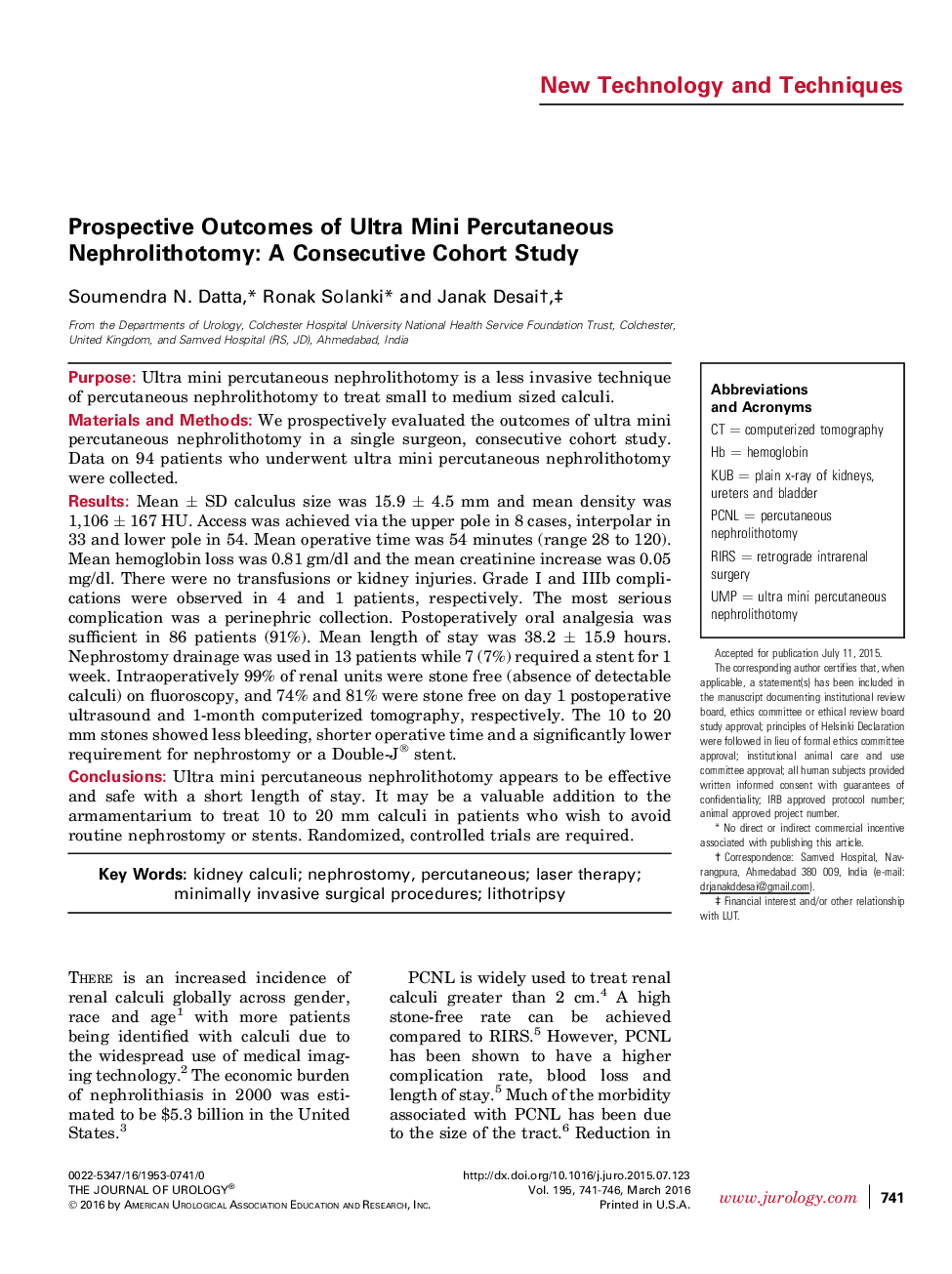| کد مقاله | کد نشریه | سال انتشار | مقاله انگلیسی | نسخه تمام متن |
|---|---|---|---|---|
| 3859148 | 1598880 | 2016 | 6 صفحه PDF | دانلود رایگان |
PurposeUltra mini percutaneous nephrolithotomy is a less invasive technique of percutaneous nephrolithotomy to treat small to medium sized calculi.Materials and MethodsWe prospectively evaluated the outcomes of ultra mini percutaneous nephrolithotomy in a single surgeon, consecutive cohort study. Data on 94 patients who underwent ultra mini percutaneous nephrolithotomy were collected.ResultsMean ± SD calculus size was 15.9 ± 4.5 mm and mean density was 1,106 ± 167 HU. Access was achieved via the upper pole in 8 cases, interpolar in 33 and lower pole in 54. Mean operative time was 54 minutes (range 28 to 120). Mean hemoglobin loss was 0.81 gm/dl and the mean creatinine increase was 0.05 mg/dl. There were no transfusions or kidney injuries. Grade I and IIIb complications were observed in 4 and 1 patients, respectively. The most serious complication was a perinephric collection. Postoperatively oral analgesia was sufficient in 86 patients (91%). Mean length of stay was 38.2 ± 15.9 hours. Nephrostomy drainage was used in 13 patients while 7 (7%) required a stent for 1 week. Intraoperatively 99% of renal units were stone free (absence of detectable calculi) on fluoroscopy, and 74% and 81% were stone free on day 1 postoperative ultrasound and 1-month computerized tomography, respectively. The 10 to 20 mm stones showed less bleeding, shorter operative time and a significantly lower requirement for nephrostomy or a Double-J® stent.ConclusionsUltra mini percutaneous nephrolithotomy appears to be effective and safe with a short length of stay. It may be a valuable addition to the armamentarium to treat 10 to 20 mm calculi in patients who wish to avoid routine nephrostomy or stents. Randomized, controlled trials are required.
Journal: The Journal of Urology - Volume 195, Issue 3, March 2016, Pages 741–746
